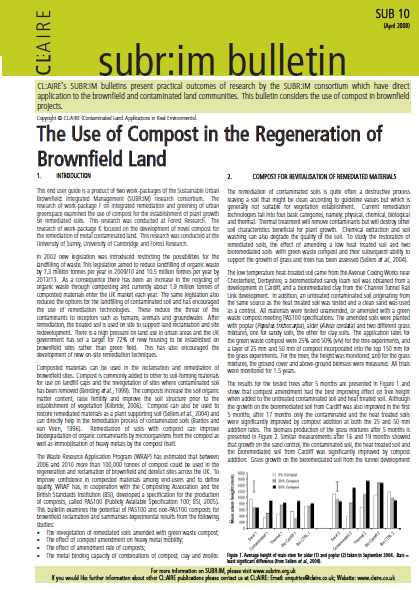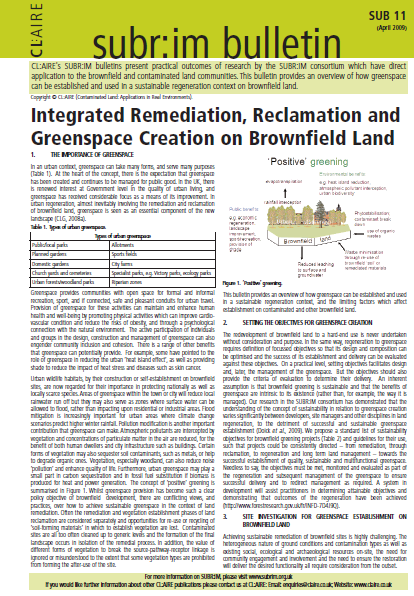Summary
Potential for the use of green waste in woodland establishment
The Landfill Tax introduced in October 1996 has encouraged landfill operators to find positive uses for plant residues arising from civic amenity sites and domestic gardens, including the diversion of source segregated green waste organic materials for composting. Such composts have potential as a soil conditioner and mulch to improve nutrition on restored sites. The addition of composted green waste may improve the structure and fertility of restored soils on landfill sites and improve the survival and growth rates of newly planted trees.
Research Objectives
Research has been conducted through the Landfill Tax Credit Scheme over four years. Specific objectives are to:
- Evaluate tree performance and foliar nutrient levels under green waste amendment
- Identify the optimum rate and means of application of the composted green waste to newly restored soils
Experimental work was conducted at three landfill sites, located at Scunthorpe (Winterton), Grimsby (Immingham) and Bridlington (Carnaby). Composted green waste was applied to each site at five rates from 0 to 500 t/ha using two techniques, the first involving incorporation of the material to a depth of 0.6 m and the second applying the material as a surface incorporation to 0.1 m into soil which had been cultivated to 0.6 m deep. Alder and sycamore species were planted into all treatments.
The effectiveness of the green waste treatments were assessed in terms of:
- Tree survival in the first years following planting
- Tree growth rates and health
- Tree foliar nutrient levels, primarily N, P and K.
Findings and Recommendations
The findings are presented in Best Practice Guidance for Land Regeneration BPG 6: Application of sewage sludges and composts and in theSUBR:IM Bulletins available in the Documents section, below.
General Content
What’s of interest
This research was funded by the Enventure Northern Limited through the Landfill Tax Credit Scheme under contract to Maslen Environmental Limited.
Support was given by the Waste Recycling Group.
Publications
‘The effect of composted green waste on tree establishment on landfill’, proceedings of the Seventh International Conference of the International Affiliation of Land Reclamationists, Runcorn 13-16 May 2003, by Foot, K.J., Hislop, M. and McNeilly, S.
Contact
Useful sites
Downloads

SUBR:IM Bulletin 10: The Use of Compost in the Regeneration of Brownfield Land
CL:AIRE's SUBR:IM bulletins present practical outcomes of research by the SUBR:IM consortium which have direct application to the brownfield and contaminated land communities. This bulletin considers the use of compost in brownfield projects.

SUBRIM Bulletin 11: Integrated Remediation, Reclamation and Greenspace Creation on Brownfield Land
CL:AIRE's SUBR:IM bulletins present practical outcomes of research by the SUBR:IM consortium which have direct application to the brownfield and contaminated land communities. This bulletin considers the use of compost in brownfield projects.
